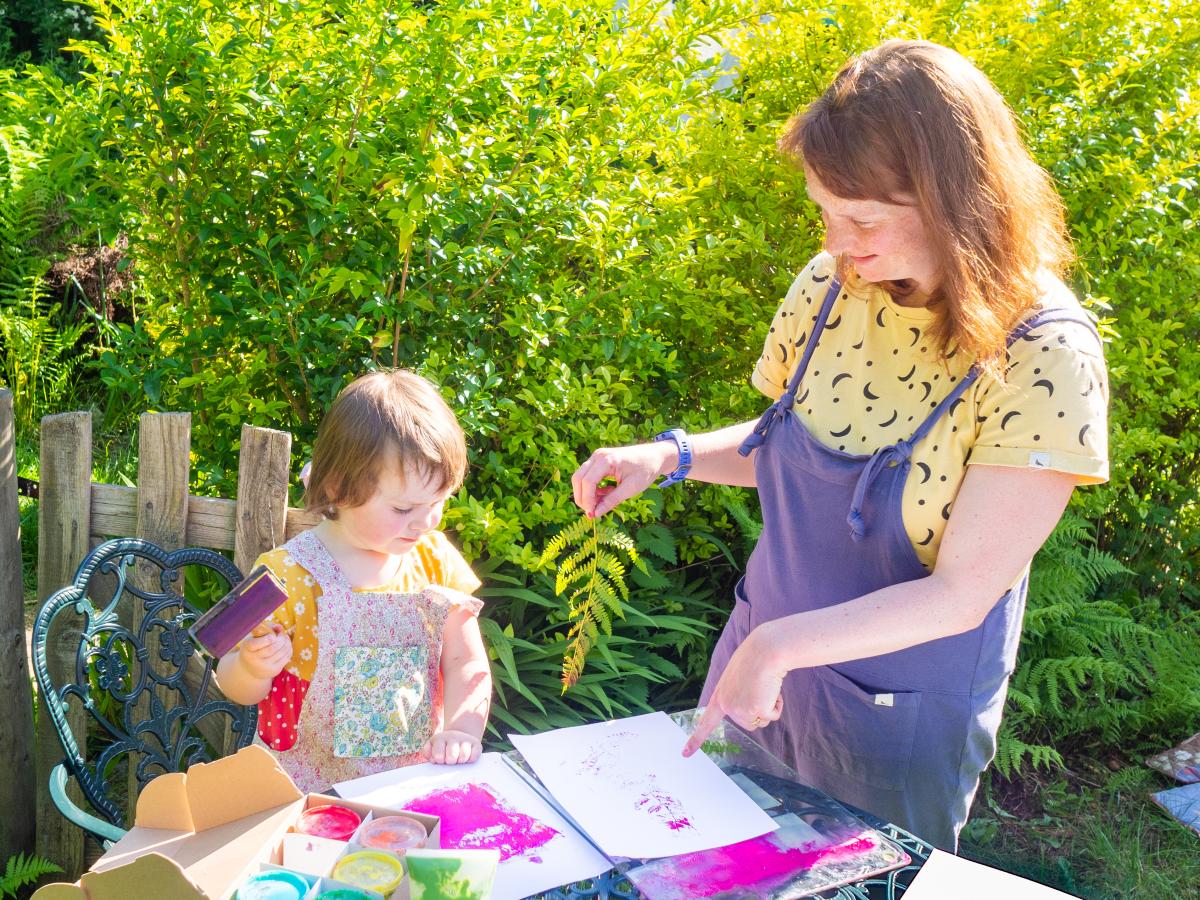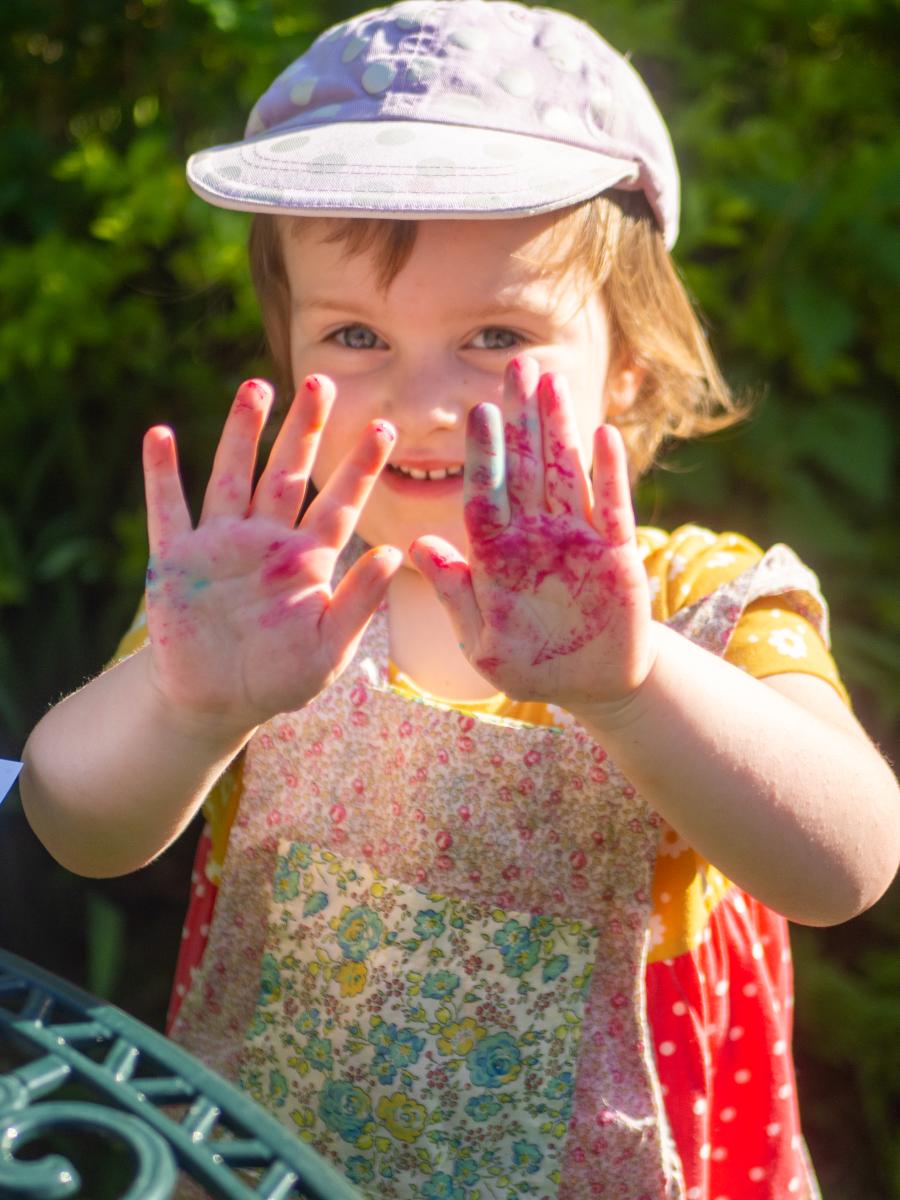Artist Rebecca Lanyon Wilmott shares her tips on ensuring your creative tools are free from animal use

In May 2021, the UK government announced plans to cut arts funding by 50%. Many arts subjects have been removed from the curriculum in favour of apparently more useful STEM subjects (science, technology, engineering and maths). Sadly, the opportunity for young people to make art is being swapped for academic subjects and screen time. I feel it is so important that children and adults engage in tactile activities that enrich us so much mentally and physically.
As a vegan artist I know that creating art without the use of any animal products takes a little bit of research. Unfortunately, it’s not as simple as picking up a pencil and a piece of paper – that pencil may contain beeswax or casein glue (an animal derived protein), and the paper could be coated with gelatine (animal collagen).
It is important to me that the materials I use are reflective of my vegan ethics. I create bold linocut prints that reflect and appreciate the beauty of local nature and our connection to it. I use Brian Clegg water-based ink to print with and for the family-friendly printmaking workshops I run locally in Lancaster. I enjoy demonstrating how beautiful and effective prints can be with vegan inks.
At present, art materials do not fall within the scope of The Vegan Society’s trademark so it's a lot harder to identify whether products are suitable for a vegan lifestyle. Fortunately, there are other resources out there, which I discuss below.
Detective work
When buying vegan art products there is a lot of detective work to be done, as long lists of unknown ingredients can be confusing. It almost feels like we need a dictionary with us to understand what all these mystery ingredients are. It is not always obvious to consider that they may not be vegan and that they may be tested on animals.
Although there is now an increased awareness of sourcing cruelty-free art materials, some raw materials are unfortunately still tested on animals even though the products themselves may not be animal-derived. Art Discount, Jackson’s Art and Vegan Womble have made excellent resources for people wanting to buy vegan-friendly products and to find out which ingredients to avoid. It would be great if other art suppliers followed suit to make buying vegan art supplies an easier option.
I’ve been vegan for over eight years, but it didn't even cross my mind that the Crayola wax crayons I was buying my daughter might not be vegan. There was no mention of recognised animal-based ingredients on the packet. It was only when I came across the excellent website ‘Double Check Vegan' that I found out that Crayola wax crayons contain stearic acid which is commonly animal-based tallow.
I have contacted Crayola, but they will not reveal whether the stearic acid is in fact animal-based, due to not wanting to reveal their top-secret ingredients. This is misleading and unfair to people wanting to lead a compassionate lifestyle if in fact the stearic acid is animal-derived. There are many vegan crayons on the market albeit more expensive, but they last longer and are usually of excellent quality. I like Azafran organic crayons from Etsy which have a lovely texture and are easy for little fingers to grasp.
Crafts with children
 My three-year-old daughter Ayla and I enjoy drawing, painting and just having messy fun together. I have done a lot of research into vegan and environmentally-friendly art materials for our activities. I hope that through arts and crafts and using only vegan materials this will help Ayla understand why we don’t use animal products and help her make ethical and vegan choices as she grows up. We hope our children recognise that we are nurturing a love and respect for animals and the environment in our choice to live a vegan lifestyle and it is one they wish to follow into adulthood.
My three-year-old daughter Ayla and I enjoy drawing, painting and just having messy fun together. I have done a lot of research into vegan and environmentally-friendly art materials for our activities. I hope that through arts and crafts and using only vegan materials this will help Ayla understand why we don’t use animal products and help her make ethical and vegan choices as she grows up. We hope our children recognise that we are nurturing a love and respect for animals and the environment in our choice to live a vegan lifestyle and it is one they wish to follow into adulthood.
For painting we use Natural Earth Paint (which is made from natural pigments) and Okonorm finger paints. I really like the website Conscious Craft, which has a vegan-friendly section of its art supplies for children. I have set up an Instagram account @vegantots which is a fun, family-friendly guide to bringing up a vegan family. I often post about the different vegan arts and craft materials we use.
Although I’m a committed vegan and it's important to me that I live an ethical, cruelty-free lifestyle, there are still surprises I come across. It is crucial to me that materials I use are vegan and eco-friendly and hopefully I inspire others to consider the source of their art supplies. Looking into sourcing vegan art materials I found it quite hard at times to find information about vegan alternatives.
I hope this article provides a useful resource for other creative vegans!
Common animal-derived ingredients to look out for
- Stearic acid: saturated fatty acid derived from animal or vegetable fats
- Ox gall: bile obtained from the gall of a bovine animal
- Gelatine: collagen taken from animal body parts
- Lanolin: a wax secreted by the glands of wool-bearing animals
- Casein: milk protein
- Cera alba: beeswax (also referred to as E 901)
- Seccotine: fish-based glue
- Hog or horsehair: commonly used in brushes
- Shellac: a residue secreted by the female lac beetle often found in inks
- Tempura: egg-based paint
Products I buy
- All Brian Clegg art supplies, paints, inks, markets, oil pastels and adhesives are vegan.
- Fabriano papers
- Derwent pencils
- UHU glues
- Synthetic Pro Arte: Bristlene brushes
- Culture hustle powder paints
- Azafran organic soya wax crayons
- Natural Earth paint
- Okonorm watercolour and finger paints
- Okonorm chalks
- Faber Castell Polychromos Artists coloured pencil sets
- Dr Zigs Bubble Painting Kit
Rebecca is a mother of two vegan tots and lives with her partner and children in sunny Lancaster. You can check out Rebecca’s art @rebeccalanyonart and the vegan friendly family account @vegantots.
Research for this article was conducted via a variety of sources. The Vegan Society is currently unable to confirm whether any of the above products meet the standards of our Vegan Trademark.
This article was first published in our membership magazine The Vegan 2022 Issue 3.
Are you enjoying this blog? Then why not join The Vegan Society as a member! From just £2 per month, you will get access to our quarterly magazine, The Vegan, receive over 100 discounts, exclusive competitions and more! To become a member or find out more information, please visit our Join Now page.
The views expressed by our bloggers are not necessarily the views of The Vegan Society.

